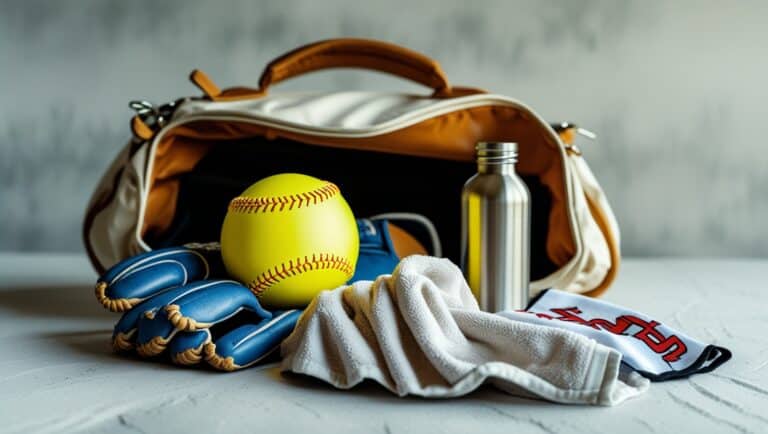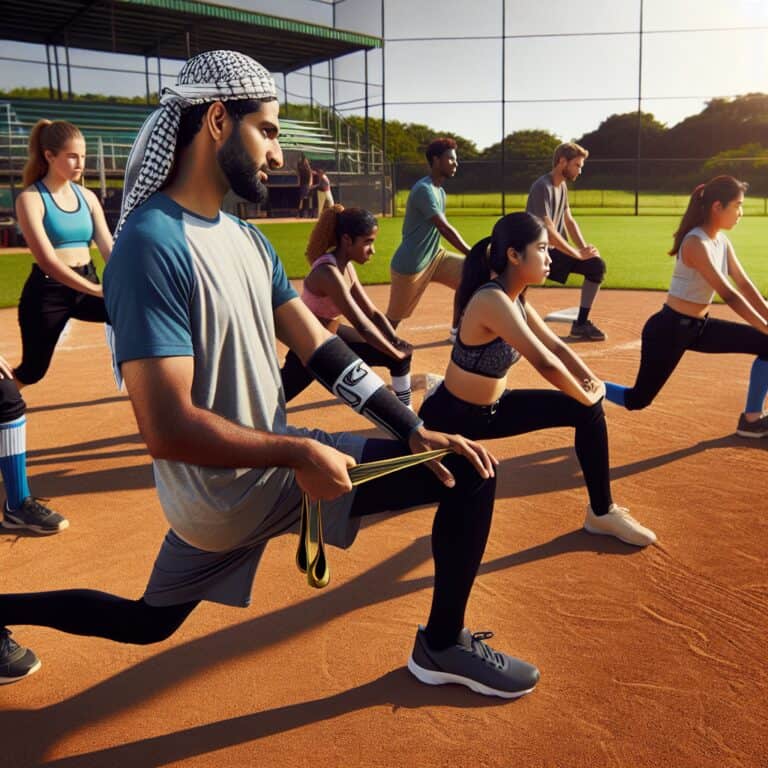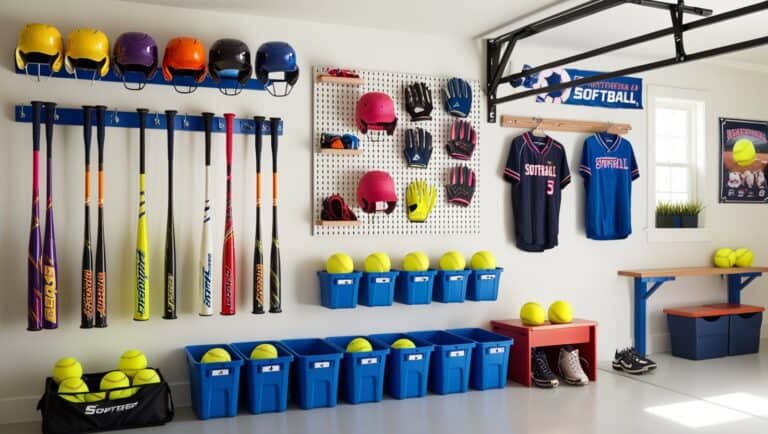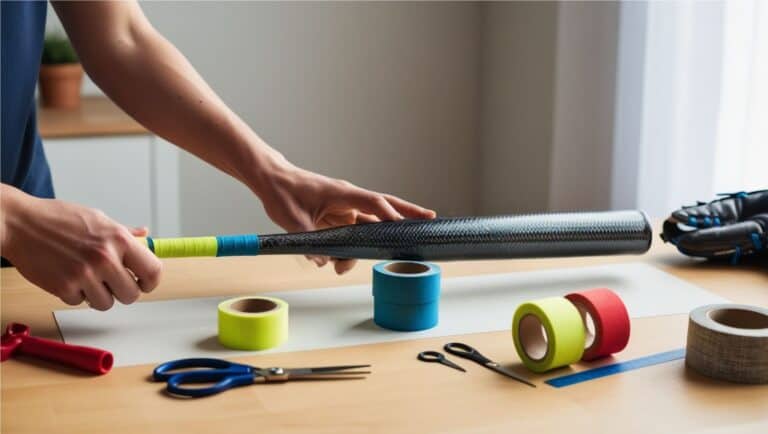2025’s Best Softball Batting Cage Accessories Guide + Pro Tips!
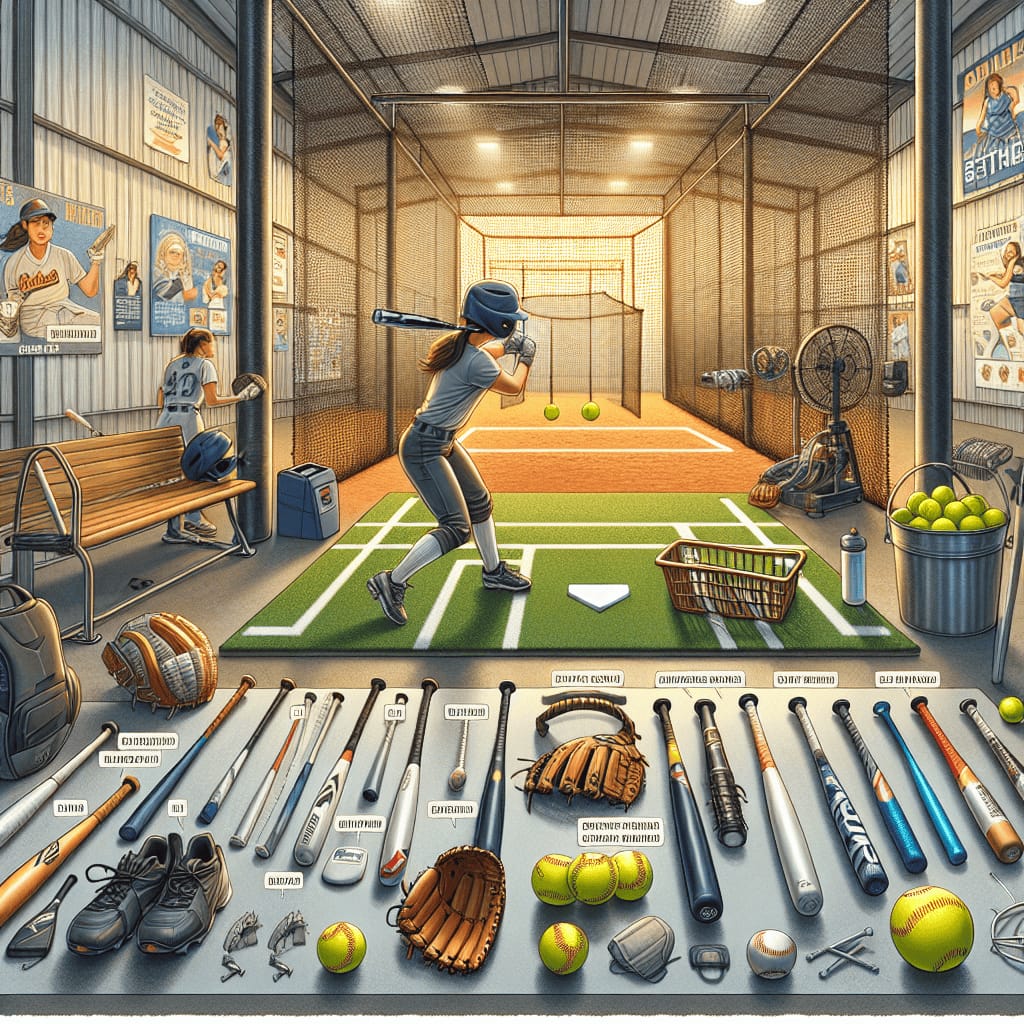
Batter up! Are you ready to take your softball game to the next level? Whether you’re a seasoned pro or just starting out, having the right batting cage accessories can make all the difference. Let’s dig into this wonderful and amazing softball batting cage accessories guide and explore how they can help you knock it out of the park this season.
Essential Softball Batting Tees for Precision Practice
Let’s kick things off with the bread and butter of any serious softball player’s training arsenal – batting tees. I’ve been around the diamond a few times, and these bad boys are game-changers when it comes to honing your swing.
First up, we’ve got adjustable tees. These are the Swiss Army knives of the batting tee world. You can tweak ’em to match any height, which is clutch for working on different parts of your swing. I remember when I first started coaching, I had this old, adjustable tee that squeaked like a mouse every time I changed the height. But man, it did the job!
Then there’s portable tees. These are perfect for the player on the go. They’re lightweight and easy to pack up, so you can get some swings in wherever you are. For the heavy hitters out there, you might want to consider a heavy-duty tee. These things are built like tanks and can take a beating. When you’re working with power hitters, you’ll appreciate having a tee that doesn’t topple over after every swing.
When you’re shopping for a tee, keep an eye out for a few key features. A stable base is crucial – you don’t want that thing wobbling all over the place. Look for one with a flexible stem too. It’ll give a bit when you make contact, which feels more like hitting a real pitch.
If you’re just starting out, you don’t need to break the bank. There are plenty of solid, affordable options out there. But if you’re serious about your training, investing in a high-end tee can make a real difference. I’ve seen players at all levels benefit from using quality tees in their softball batting cage accessories guide routine.
Remember, the right tee can help you groove your swing and build muscle memory. So don’t skimp on this essential piece of equipment!
Protective Screens and Nets for Safe Training Sessions
Alright, let’s talk safety. ‘Cause let’s face it, when you’re swinging a bat and launching balls at high speeds, things can get dicey real quick. That’s where protective screens and nets come in handy.
First off, let’s chat about L-screens. These bad boys are a pitcher’s best friend during batting practice. They’re shaped like an “L” (hence the name) and provide protection while still allowing the pitcher to see the batter. I’ve had my fair share of close calls, and you’ll be glad you’ve got one of these between you and a line drive.
Then we’ve got pitching screens. These are similar to L-screens but offer full-body protection. They’re great for machine pitch sessions or when you’re working with less experienced pitchers. I once saw a pitcher take a comebacker right to the gut because he thought he was too tough for a screen. Spoiler alert: he wasn’t.
Now, let’s talk netting. This is a crucial part of any softball batting cage accessories guide. You want something that’s strong enough to stop even the hardest-hit balls. There are different gauge options out there, but I usually recommend going with #42 or #36 for softball. It’s better to err on the side of caution, ya know?
When it comes to sizing, measure your cage carefully. You don’t want gaps where balls can escape. And trust me, they will find those gaps if they exist. I once had a player hit a ball through a tiny hole in a net while at a tournament, and it rolled all the way to the parking lot. We spent half an hour searching for that dang ball!
Don’t forget about the importance of regular maintenance on your protective gear. Check for wear and tear, and replace anything that looks iffy. It’s not worth risking an injury to save a few bucks.
And here’s a pro tip: if you’re setting up an outdoor cage, consider getting UV-resistant netting. The sun can really do a number on regular netting over time. Sometimes paying a little more up front can save you a lot of money in the future by not having to replace the entire cage setup after just one season in the sun.
Remember, safety should always be your top priority when setting up your training space. A well-protected batting cage not only keeps everyone safe but also allows players to train with confidence. So don’t skimp on the protective gear, my softball friends!
Pitching Machines: Your Tireless Training Partner
Now, let’s dive into one of my favorite pieces of equipment – pitching machines. These babies are like having a tireless teammate who’s always ready to throw some heat. Trust me, once you incorporate a good pitching machine into your softball batting cage accessories guide, you’ll wonder how you ever lived without it.
First off, let’s talk about the benefits. Consistency is the name of the game here. A pitching machine can throw the same pitch, at the same speed, in the same spot, over and over again. It’s perfect for working on specific aspects of your swing or for getting in a ton of reps.
Now, there are a few different types of pitching machines out there. You’ve got your wheel-style machines, which use one or more wheels to propel the ball. These are great for consistency and can usually handle different types of balls. Then there’s the arm-action machines, which mimic the motion of a real pitcher. These can be great for getting used to picking up the ball out of a pitcher’s hand.
There’s also hybrid models that combine features of both. Personally, I’m a fan of the wheel-style for most practice situations, but I’ve seen players benefit from all types.
When you’re choosing a pitching machine, there’s a few things to keep in mind. First, think about portability. If you’re gonna be moving it around a lot, you might want something lighter. Let’s just say you don’t want a super heavy one or it won’t get used as often.
Another thing to consider is the speed range. Make sure it can throw slow enough for beginners but also fast enough to challenge your more advanced players. And don’t forget about versatility – can it throw different types of pitches? A machine that can throw left to right or right to left and can really take your training to the next level.
Remember, a pitching machine is an investment in your development as a player. It might seem pricey upfront, but the amount of quality reps you can get in will more than make up for it. So don’t be afraid to splurge a little on this key piece of your softball batting cage accessories guide setup!
Softball Batting Cage Accessories Guide: Must-Have Training Aids
Alright, let’s get into the meat and potatoes of some must-have training aids for your batting cage. These gadgets and gizmos can really take your practice sessions to the next level. Trust me, I’ve been playing a long time, and these are the ones that really make a difference.
First up, we’ve got swing trainers and weighted resistance sleeves. These bad boys are great for building strength and improving your mechanics. I remember when I first started using a weighted resistance sleeve on my bat – it was so hard to swing fast! But man, did it make a difference in my bat speed.
Next, let’s talk about hitting stations and drill tools. These are fantastic for targeted practice. You’ve got things like hanging ball trainers, and even pitch-back nets. I’m a big fan of the pitch-back nets for working on different pitch locations. Plus, they’re great for when you’re practicing solo.
Now, here’s something that’s become increasingly popular in recent years – video analysis equipment. This stuff is a game-changer, my friends! Being able to see your swing in slow-mo can really help you identify and correct issues. I remember the first time I saw my swing on video – it was a real eye-opener. I thought I was watch the ball all the way in, but boy, was I wrong!
When it comes to video analysis, you don’t need to break the bank. A simple smartphone mount and a slow-mo app can do wonders. But if you’re serious about your training, investing in a dedicated system can be worth it. Just make sure you know how to interpret what you’re seeing, or have a coach who can help.
One more thing – don’t forget about the importance of a good batting tee in your softball batting cage accessories guide. I know we talked about them earlier, but they’re worth mentioning again. A quality tee can be used in so many different drills and is essential for working on your swing mechanics.
Remember, the key with all these training aids is consistency. It’s not enough to just have them – you gotta use ’em regularly to see results. So get out there and start swinging!
Durable Balls and Ball Feeders for Efficient Practice
Let’s chat about one of the most overlooked aspects of a solid softball batting cage accessories guide – the balls themselves and how to keep ’em coming. Having the right practice balls and a good feeding system can make or break your training session.
First up, let’s talk about the different types of practice balls. You’ve got your standard dimpled balls, which are great for general practice. They’re durable and give you a good feel for hitting a real softball. Then there’s foam balls – these are awesome for indoor practice or when you’re working with younger players. They don’t travel as far, which means less chasing and more hitting.
Now, here’s a personal favorite of mine – weighted balls. These bad boys are heavier than regular softballs and can really help build are strength when playing catch in the batting cage. Just be careful not to overdo it with these. I once made the mistake of using them exclusively for a week and could barely lift my arms afterwards!
Alright, now let’s talk about ball feeders. These things are lifesavers when you’re practicing alone or with a small group. There’s nothing worse than spending half your practice time chasing down balls, am I right?
Automatic ball feeders are the cream of the crop. They can deliver balls at set intervals, allowing you to get into a nice rhythm with your swings. Some even let you adjust the height and angle of the pitch. I remember the first time I used one of these – it felt like I had my own personal pitcher!
Lastly, let’s not forget about ball storage. A good storage solution can save you tons of time and headache. I’m a big fan of rolling ball carts – they’re easy to move around and keep everything organized. Just make sure to get one with a lid if you’re storing your balls outside. You don’t want an unexpected rainstorm to ruin your balls by getting soaked!
Remember, the goal here is to maximize your hitting time. The right balls and feeding system can help you do just that, making them essential components of any comprehensive softball batting cage accessories guide.
Lighting and Visibility Enhancements for Extended Practice Hours
Alright, let’s shed some light on an often overlooked aspect of batting cage setup – lighting! Good visibility can make a world of difference in your training, especially when you’re trying to squeeze in some extra practice time after the sun goes down.
First things first, let’s talk about why proper lighting is so darn important. I mean, you can’t hit what you can’t see, right? Good lighting not only helps you track the ball better, but it also reduces eye strain and fatigue. I remember the first time I hit in a poorly lit cage – I was swinging at shadows half the time! Not exactly productive practice, if you ask me.
Now, when it comes to lighting options, LED is the way to go these days. They’re energy-efficient, long-lasting, and provide nice, bright light without generating a ton of heat. Plus, they come on instantly – no waiting around for them to warm up like with those old fluorescent tubes.
When you’re setting up your lights, try to mimic daytime conditions as much as possible. You want even lighting throughout the cage, with no harsh shadows or bright spots. I once practiced in a cage where the lights were positioned in a way that created a weird shadow right where the ball was released. Talk about a recipe for whiffs!
For outdoor cages, you might want to consider portable lighting solutions. There are some great battery-powered LED options out there that can really extend your practice hours. Just remember to charge ’em up before you head out! You don’t want to get all the way to the field for some night practice, only to realize the batteries were dead. Talk about a swing and a miss!
Here’s a pro tip: if you’re setting up permanent lighting, consider installing a dimmer switch. This lets you gradually increase the light level as it gets darker outside, helping your eyes adjust more naturally. It’s a small thing, but it can make a big difference in your comfort level. One more thing to keep in mind – make sure your lights are properly secured and protected. You don’t want a stray foul ball taking out your lighting system.
Remember, good lighting is an essential part of any comprehensive softball batting cage accessories guide. It might not be as exciting as a new bat or pitching machine, but it can have a huge impact on the quality of your practice sessions. So don’t leave yourself in the dark – light it up and watch your game improve!
Whew! We’ve covered a lot of ground in our softball batting cage accessories guide, haven’t we? From essential batting tees to high-tech pitching machines, these tools can help you transform your batting cage into a powerhouse training facility. The key to success is consistent practice with the right equipment. So, what are you waiting for? It’s time to gear up and start swinging for the fences! Your improved batting average is just a few practice sessions away. Now, go out there and show ’em what you’ve got!
Craving more softball wisdom? Unlock game-changing tips below!


